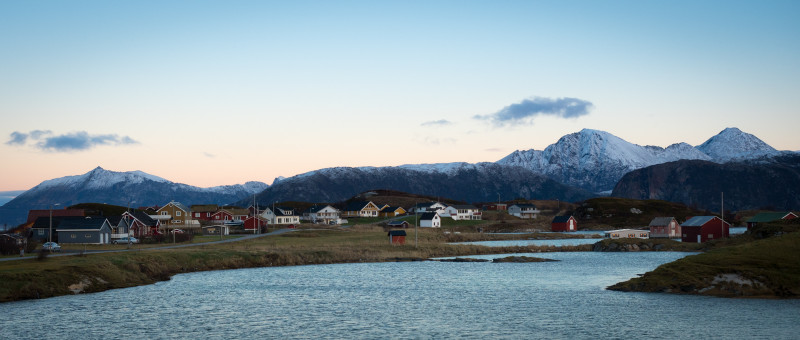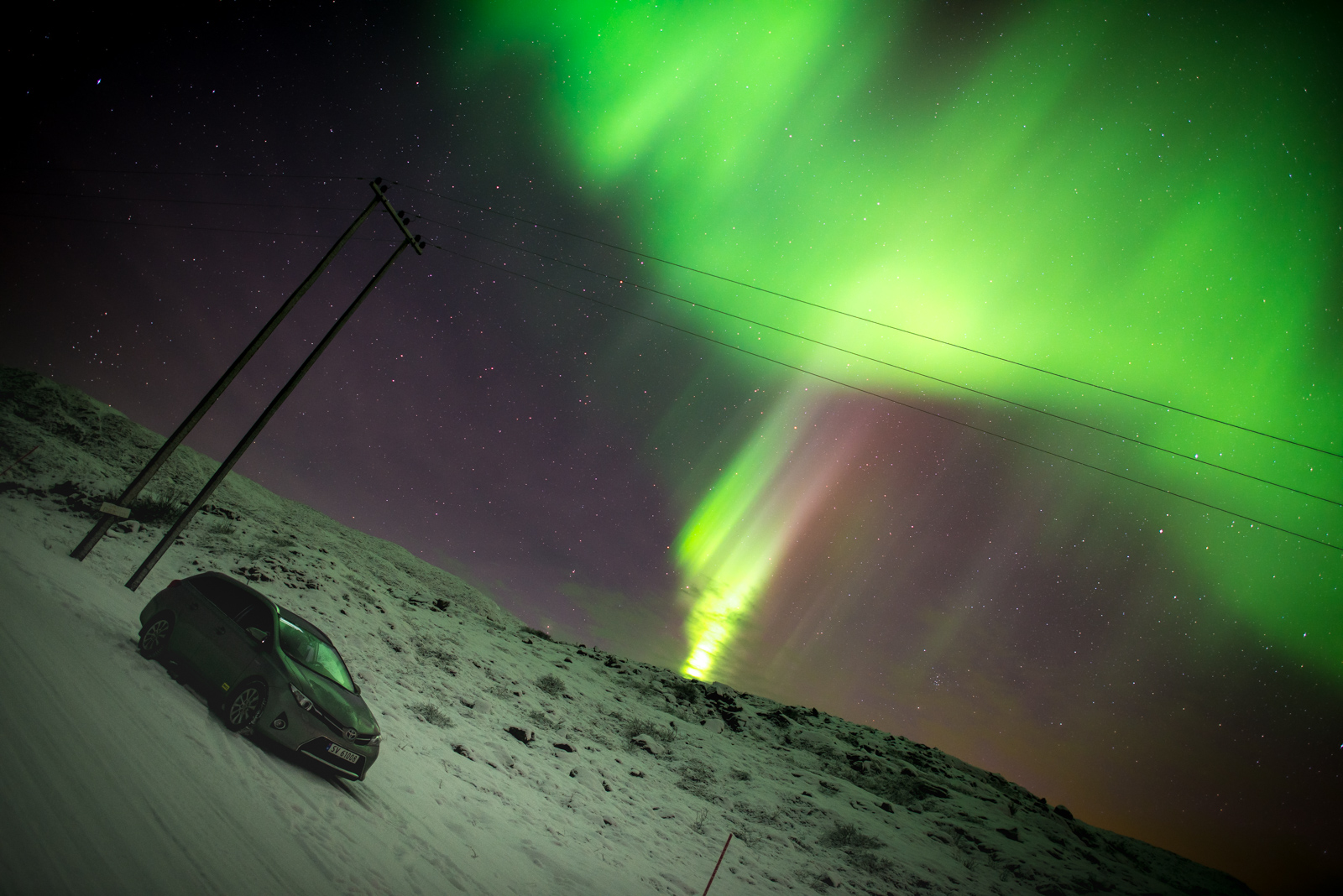The rotten duty-free cold I picked up on the flight back from Singapore has kept us confined to our AirBnB residence in Tromsø for four days already. Apart from a brief outing to discover just how much fun it isn’t to drive a hybrid hire car on hard-packed ice our only escape has been a brief walk into the tiny town, sampling a polar museum and a £12 pint of IPA. Christ it’s cold here. And dark. The sun comes up properly at 10:30 and sets again at 14:30, each cycle minutes shorter than the last until, in about three weeks time, it’s not going to bother rising at all.

Unlike last week’s Indonesian fun and games, this trip was to be a well-planned attempt at ticking every photographer’s box, The Northern Lights. At least, that was the plan. So far the light show had been decidedly unspectacular, the saturated fingers of radioactive green light only conspicuous by their absence. In an attempt to escape Tromsø’s light pollution we’d earmarked a quiet spot on Rinvassøy, roughly an hour’s drive from town and hopefully far enough to give the light’s a chance, but after 30 minutes of waiting for nothing we decided to try another tactic.
Not wanting to go further from base we turned back south, but instead of taking the tunnel back to Kvaløy carried on with the intention of visiting Skarsfjord, what looked like a tiny settlement at the end of the road. Light pollution out there should be as minimal as the traffic, which is a great time to mention that roads outside major towns in Norway are unlit, quite narrow, and entirely covered in ice most of the year. Not the kind of friendly, sloshy grey muck we call ice – this stuff is an inch thick and doesn’t thaw for months at a time. The locals fit their cars with special tyres covered in metal studs, but since these don’t work too well or last too long on regular tarmac, our hire car company hadn’t bothered. The few hairy moments I’d already had up to this point made me even more nervous as our narrow road turned from asphalt to dirt to potholed dirt, before splitting in two; the left fork ending in a small bay and the right fork leading up a hill before passing under a raised barrier. That bay can’t be Skarsfjord, can it? Just one house? And anyway, the road was supposed to end here and yet the other option carried on up the hill. We took the latter option, reasoning that we can always turn around or gently reverse back if things get too wild.
Vehicles had passed this way – there were tracks – but they may well have had snow chains or spiked tyres. Either would have been useful now, because we were driving on hard-packed snow rather than ice, and the gradient was steadily increasing. Going uphill in times of dubious traction is all well and good, but what comes up must come down. Before long we crested a little pass between two peaks, and as the road started to drop away again on the other side I decided to go no further because I couldn’t judge the gradient until it might be too late to back out. Instead we parked up by the side of the road and inspected the skies, a wide blanket of myriad stars from one horizon to the other. No light pollution, no Aurora. Still, it’s warm in the car, we’ve all evening as well as a tank of fuel…
Gradually, about 10 minutes later, the sky began to change. A thin tendril of smoke-like luminescence rose from the silhouetted crest to our left, and joined directly overhead with one seemingly attached to the peak to the right. Over the next five or ten minutes, the Aurora slowly transformed and twisted, detaching itself from the horizon and then re-forming into a variety of graduated spirals, combs, clouds and swirls.
I set the D800E up with a Nikkor 24mm F1.4, cursing my decision no to bring the 14-24mm F2.8. Focussing on the ethereal green haze proved more difficult than I anticipated, and I found I had to disengage autofocus while zoomed in on live-view in order to get a good result. I also hadn’t expected the stars to move so fast! When using a tripod I normally allow myself the luxury of stopping down a couple of notches and making up the difference with exposure, but I wanted sharp points of light instead of trails and discovered that anything above 15 seconds was a non-starter.
We spent about an hour parked up on the mountain, the missus running down her Kindle and me exhausting my SLR’s batteries before giving up and heading home. Standing still in -7 degrees is a punishing trial for man and machine, and I’m surprised the Nikon lasted as well as it did. (I tried the E-M5 mk 2 as well, but that couldn’t focus and then died 2 minutes later) our drive home was the predictable mixture of buttock-clenching crawl down the mountain and anticipation of the final results, which developed nicely over a mulled wine back at base.





